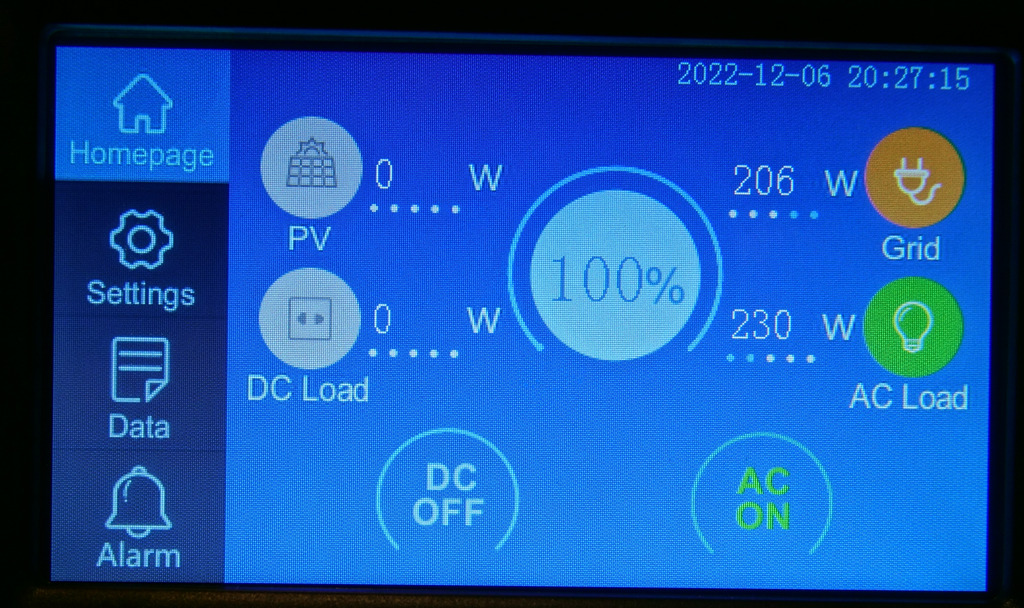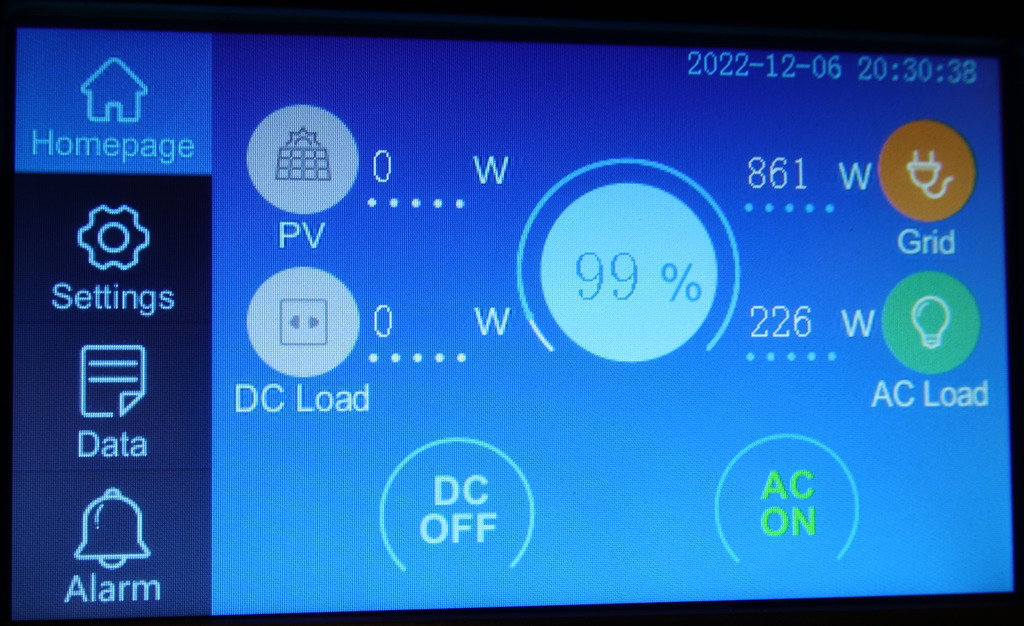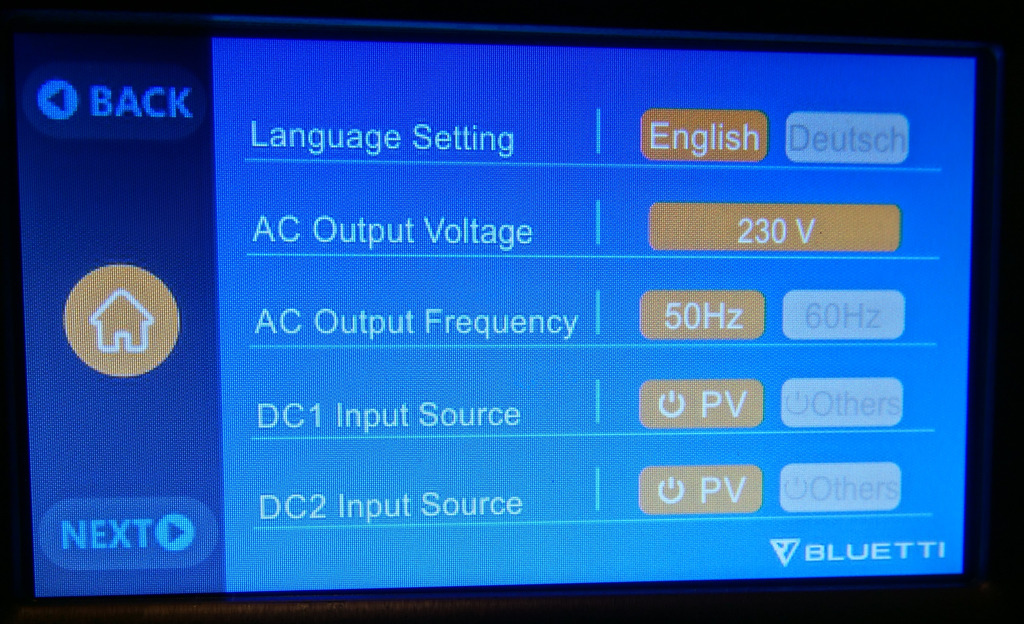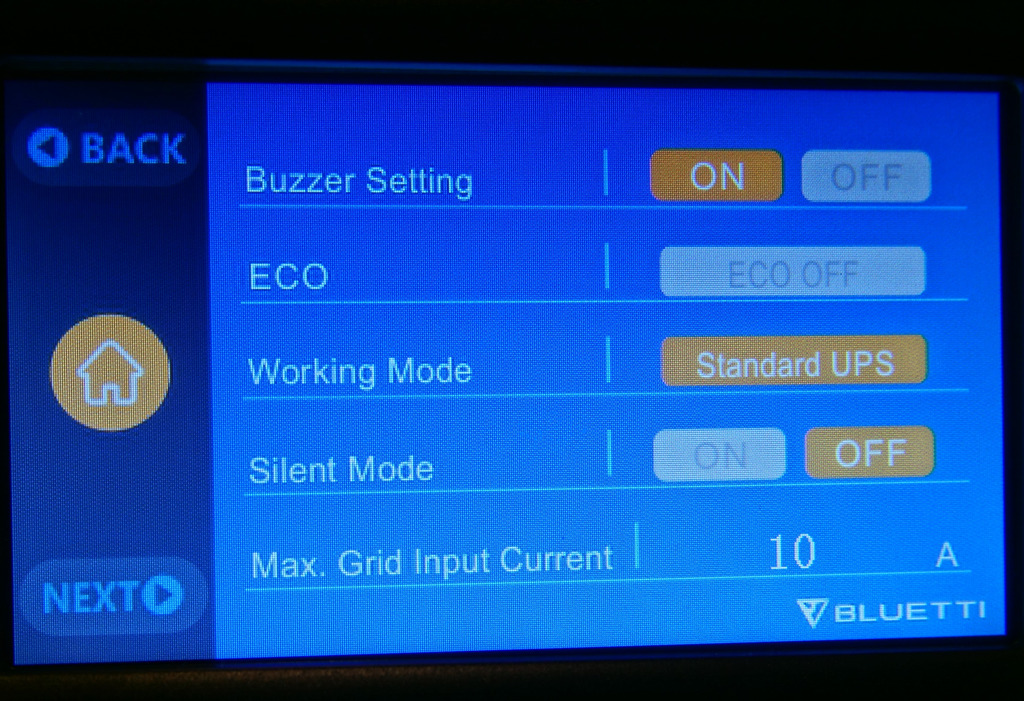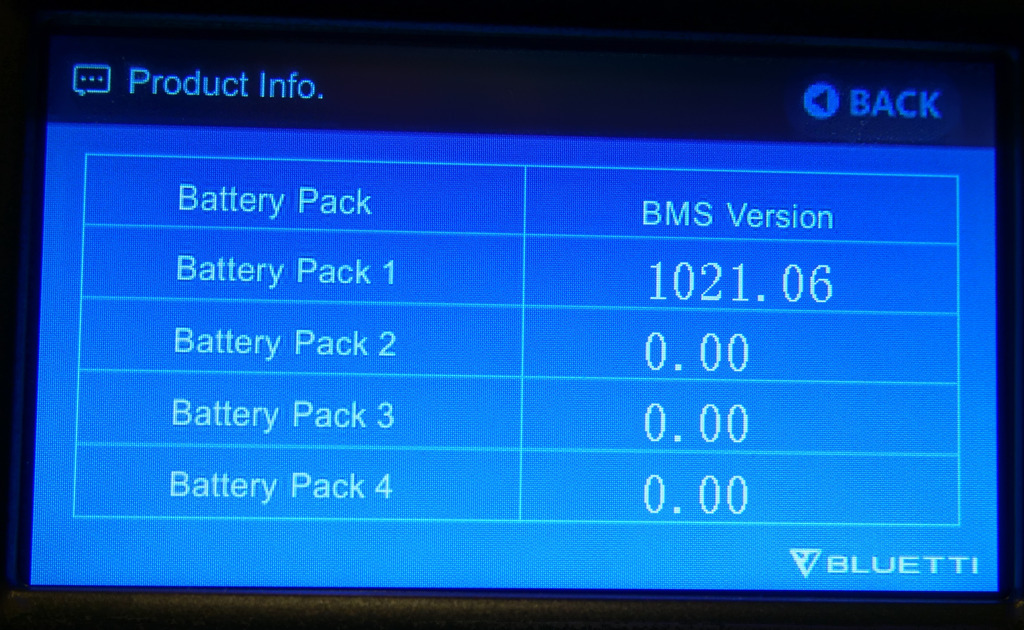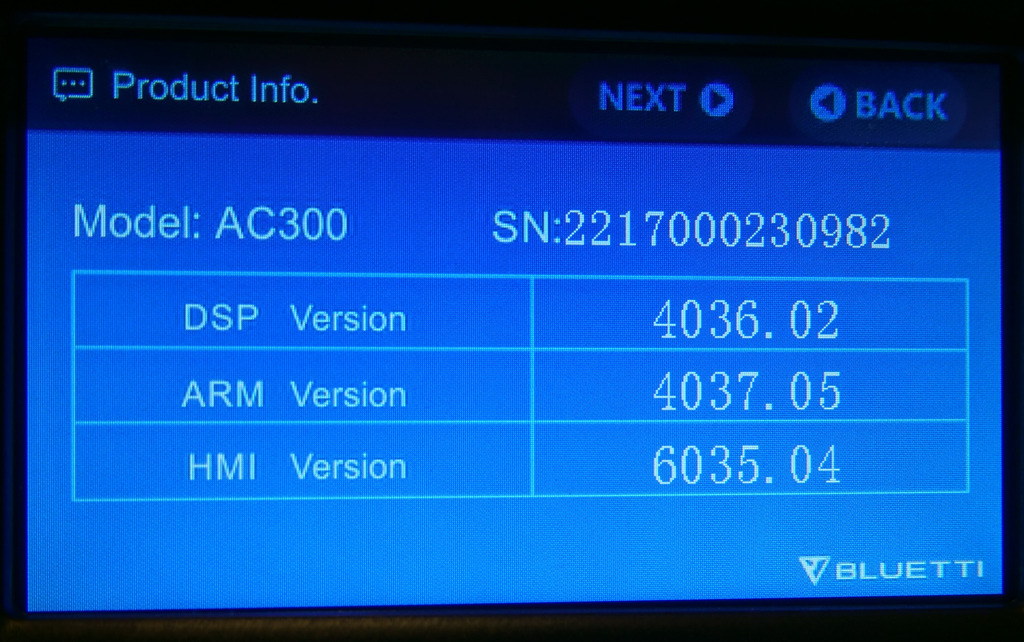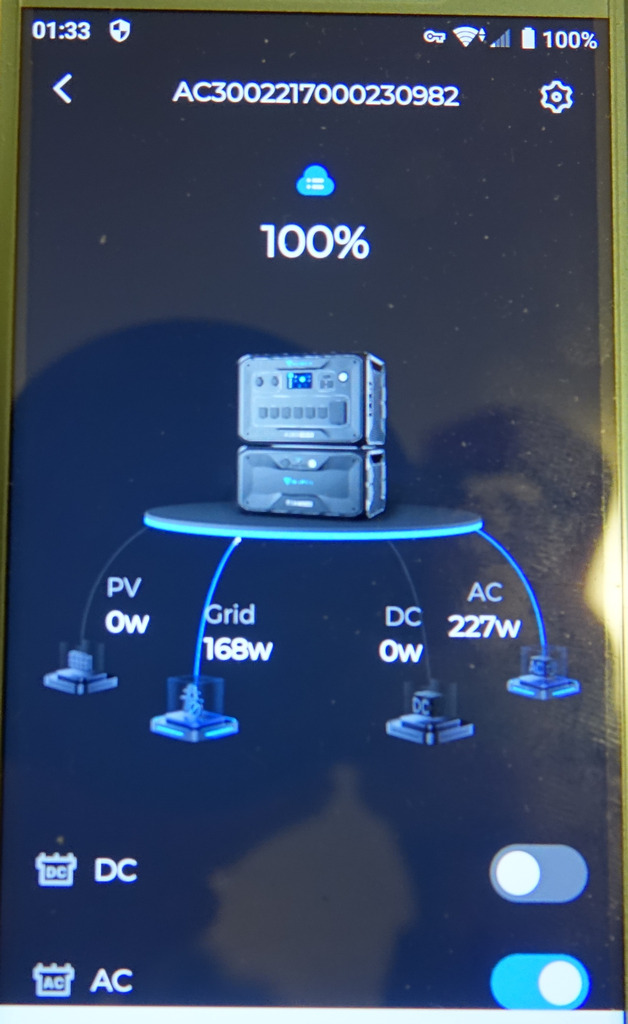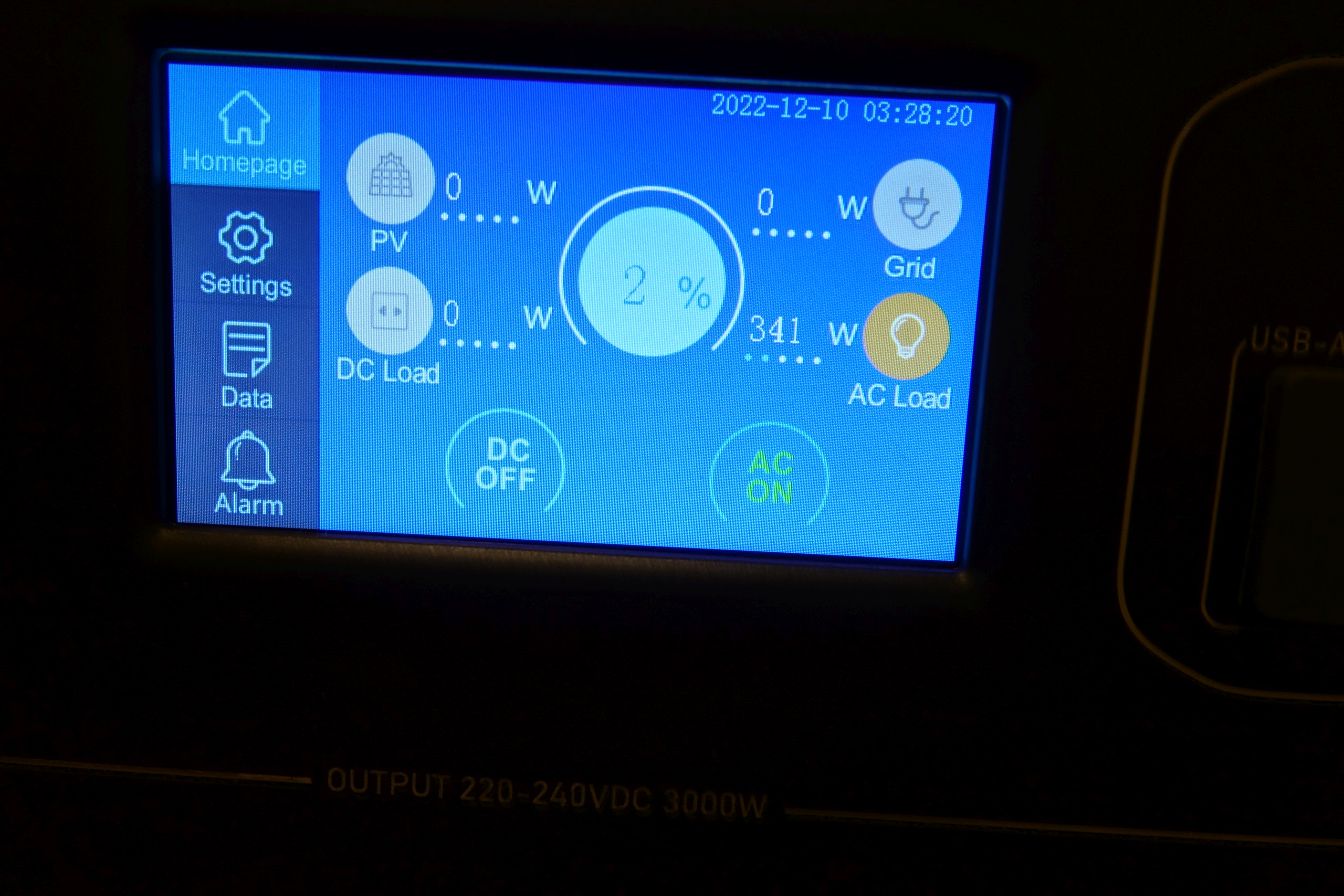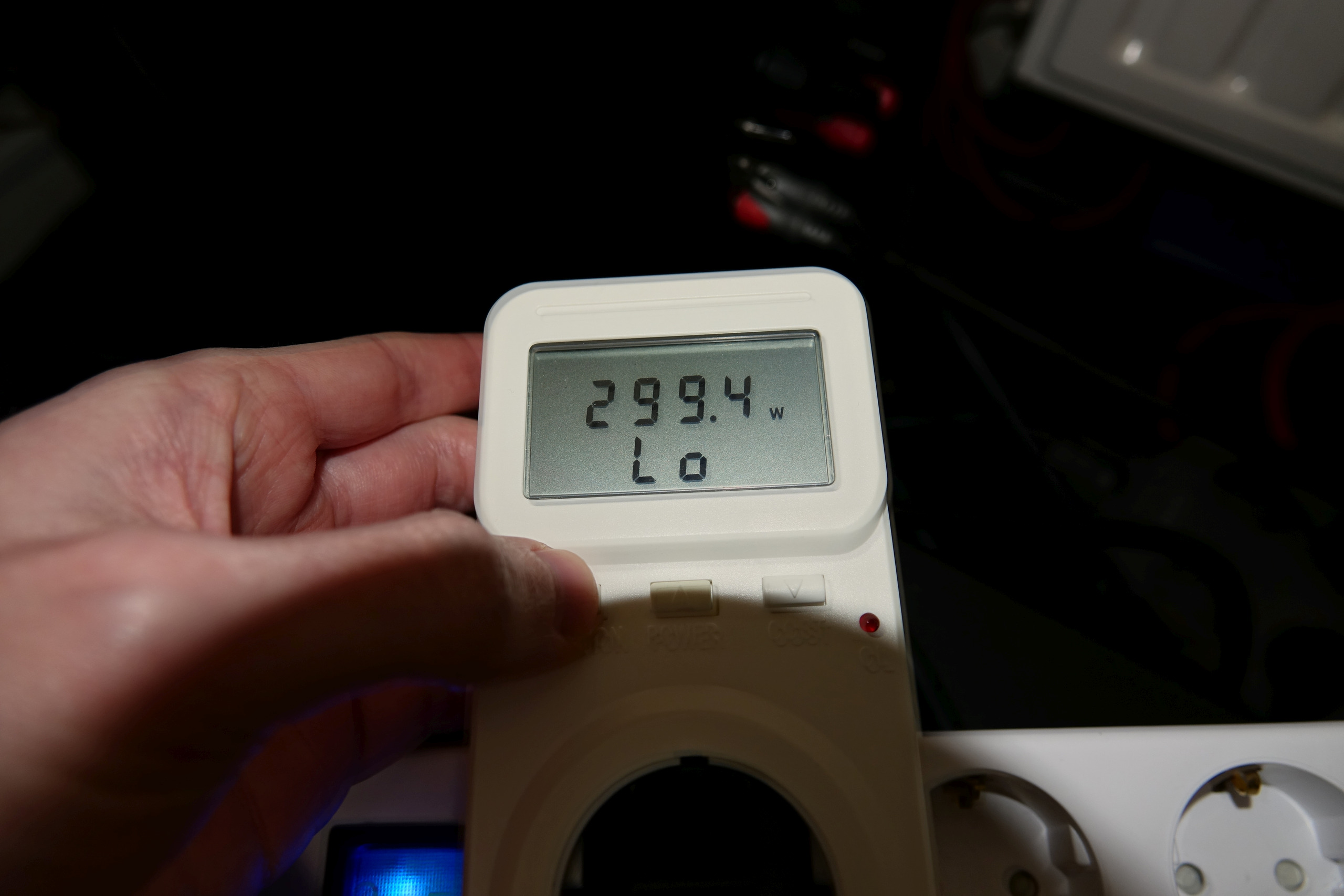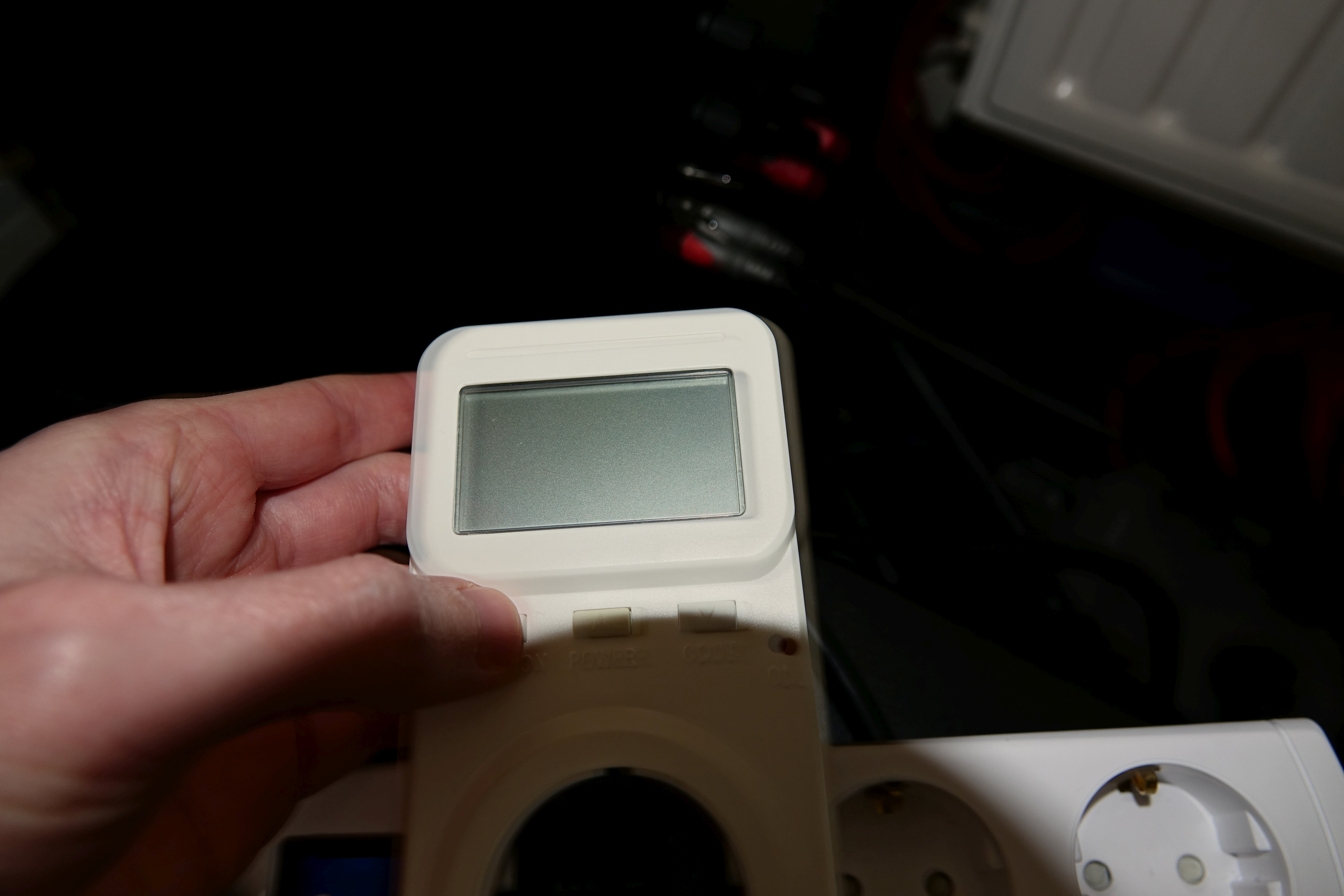My new Bluetti AC300 + B300 arrived today. I’m using it as UPS to replace my old computer UPS.
Everything is installed, AC output is ON. UPS mode is Standard UPS.
I got a PC, a monitor, some audio and network equipment as load.
The battery of the AC300 is now fully charged. 100%. But I notice that the AC300 keeps going to battery. Battery status switches from STANDBY to DISCHARGE and back. There are no power outages. Battery capacity changes from 100% to 99% and back to 100%.
How can I make sure that my AC300 is ONLY using the battery during a power outage? Because I’m afraid that the current behavior may wear out the battery in the long run.
Hi @TheQuickFox , Is your AC300 connected to the utility? Can you confirm if it is in UPS mode?
Is the AC load on the display shows green when carrying equipment?
Yes, it is connected to utility power.
Yes, it is in UPS mode.
This is a thread about the same issue, but in German language:
https://community.bluettipower.com/t/ac300-usv-modus-batterie-wird-immer-wieder-kurz-geladen/5499
When AC load needs 227 watts, I expect the Bluetti to take at least 227 watts from the utility power, not just 168 watts from the utility power and the rest from the battery.
Hi @TheQuickFox , This is normal, there is no problem with the machine. Please do not worry. The machine will have its own power consumption, so the power will be full immediately after dropping to 99%.
Should I read this as: The AC300 internal components ALWAYS run off the battery, even if AC utility power is available? That would explain the fact that the battery goes to discharge state from 100% to 99% and then the AC300 recharges the battery to 100%.
Because my “classic” APC Smart UPS never runs anything off the battery EXCEPT when utility power is out or bad. In other words, with my APC the battery is always in standby once it is fully charged and the battery is only used during power outage.
@TheQuickFox
Your observation are the same with mine.
I also use the Bluetti AC 300/B300 as UPS.
In standby mode, with no grid, and without consumers connected to AC, theres is a power consumption til 3000 Watt in 3 days. This means the accu B300 is empty within 3 days.
This behavior is caused by the AC300 control unit.
So my conclusions are that the AC300 control unit selfconsumption is about 42 Watt per hour in standby modus
John
But if there is also a standyby consumption from the ac-port connected consumers as like a pc, there will be much more power consumption in standby mode.
So I am very interested to see the comparison to the APC-Schneider system (what kind do you have used til now?)
Can you do some measurement in comparison to the Bluetti-System?
John
My old UPS is a APC Smart-UPS 1500. SUA1500i
Nice unit. Made roughly between 2005 and 2010. The main reason I bought the AC300 is because the APC only runs for around 30 minutes off battery with my load. And you have to buy new lead-acid batteries every 3 to 5 years.
APC says a runtime of 30 minutes is normal. Their UPS systems are mostly designed to intercept short power outages in which you get the time to either save your work and shut down your systems or turn on a generator. However, I live in a small apartment with no land/garden so I cannot use a generator. And I cannot put one on my balcony because of the engine noise it makes. (Not to mention storing flammable fuel at home) So, a big battery power station like the Bluetti is perfect.
But unlike the Bluetti, the Smart-UPS does not use the battery unless there are utility power problems. The Smart-UPS takes 15 watt in standby, to monitor the utility power quality and power the internal electronics. The Smart-UPS will compensate for low and high AC utility voltage and convert it back to 230v. If power goes out completely or if voltage is too far off then it switches to the internal battery lightning fast.
Now I have to consider to either use the Bluetti as UPS or to keep the APC Smart-UPS to watch my load with the Bluetti as offline standby for extended power outages.
Before you consider getting a Smart-UPS: You should inform yourself of noise levels, output capacity and if the inverter is a pure sine-wave one. Most business/server UPSses are noisy with continuous fan noise. Many consumer UPSses are more silent or completely silent but only have a stepped sine wave inverter. Also, capacity is in VA not in watts. Consumer level UPSses do not always have user-replacable batteries.
@TheQuickFox ,
thank your for your information about your APC-System Smart-UPS 1500. SUA1500i.
If you already have bought the bluetti AC300/B300-system and have now both systems availible so
my solution to your problom may be:
combine both system with an 3-way switch (with hand- or automatic switch). So the result can be that the whole runtime will exceed to at least 90 minutes.
But test it, because may be there will be some troubles.
John
For now I put my equipment into the APC UPS and have the Bluetti stand besides it, shut down, fully charged. During a power outage I just turn on the AC300 and plug my APC UPS into it. The output of the Bluetti is very clean (as expected with the true sine-wave inverter) The APC Smart-UPS takes it as well as utility power.
I did my first full battery drain. I got 2.147 kWh out of the 3.072 kWh battery, using AC output only, 290 to 360 watt. So on lower wattages there is quite some capacity loss with the inverter and AC300 unit.
I kept an eye on the unit as I drained the battery to capture the final output capacity.
Draining the battery at 341 watts
Using a power usage meter on the output of the AC300
Final battery AC output capacity in kWh
Lowest wattage during the test
When I wanted to take a picture of the highest wattage the unit shut down. So I really got the final numbers.
@BLUETTI
Here are my suggestions how to improve the unit for UPS usage:
- Design it as a true UPS system where the electronics run off utility power when available.
- As long as utility power is fine, don’t discharge the battery. Keep the battery as standby and fully power the load from utility power when utility power is good.
- In UPS mode, make sure that when utility power comes back after the battery is completely drained, the selected outputs of the Bluetti come back on. This keeps downtime of the equipment minimal. This is especially important on locations where there is nobody to manually turn on the inverter after a long power outage.
- Include a PC connection to present the Bluetti battery as UPS battery to Windows. Then you can configure Windows to automatically shut down when battery capacity is critical.
- Look if there are options to reduce standby power usage when in UPS mode
- Look at options to make the AC inverter / AC300 unit more efficient at lower wattage levels.
- A surge protector would be nice. Not just to protect the connected equipment but also to protect the power station UPS itself.
What I like on the AC300+B300 unit:
- AC power output quality
- The many options for charging and discharging
- LiFePo4 battery chemistry and the expected longevity
- Battery capacity. Even tho I get far from the 3.072 kWh output from it, it blows away traditional UPS systems with AGM SLA batteries.
- Battery expandability and separate units for the power station electronics and the battery.
1 Like
Unfortunately it doesn’t seem that Bluetti is interested in solving this issue.
The “behaviour” you described is reported in multiple threads on this forum also for other models, but Bluetti never gives a straight answer, nevertheless a solution/fix.
I don’t know if all limitations can be fixed for the current models. Perhaps only the resuming of output state after utility power resumes is something that can be easily fixed in software.
Most other limitations are probably linked to the fact that Bluetti is not an UPS company like APC/Schneider Electric. Bluetti comes from the powerbank and power station business. UPS is probably an added feature.
Fixing all of the issues would require a hardware redesign. It may be absolutely worth it to do so as it is an interesting market to serve and most traditional UPS manufacturers are only cautiously trying new battery chemistries (other than SLA).
APC now has some Li-Ion UPS units but inho LiFePO4 is a much better chemistry for UPS usage. It is safer and can handle far more charge/discharge cycles. And the APC units are probably quite noisy as they are designed for server rooms, not homes and offices.
For now, the Bluettis are just very basic UPS systems with low efficiency but excellent battery runtime. They keep your PC on after utility power failure.
1 Like
This is a similar design flaw that the Bluetti EB3A has: Every 35 minutes it draws power to charge from 99% to 100% with heat generated and the fan coming on with no AC or DC on. If there is no load and no AC or DC on, the unit can remain at 100% for more than 3 weeks. This is a flaw that could be fixed in Firmware. I hope a Bluetti software engineer gets to comment on this Thread. Thanks!
1 Like
That would be awesome. But before we can say that this can be achieved with a software update, we need to know how the systems works.
I got the hypothesis that the internal electronics run off the battery, no matter what. Running the unit as UPS just keeps the battery charged. This would explain the high power consumption and the fact that the unit keeps taking power from battery, even if utility power is fine.
But this is just an hypothesis. I don’t know the design. If it can be changed to a true standby UPS where everything runs off the utility power including the internal electronics and only switches to battery when utility power is out (or bad) this would be awesome.
